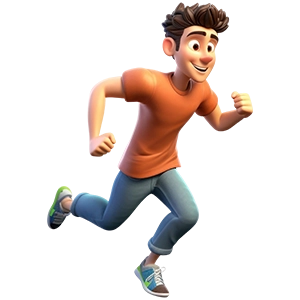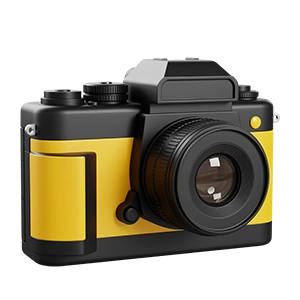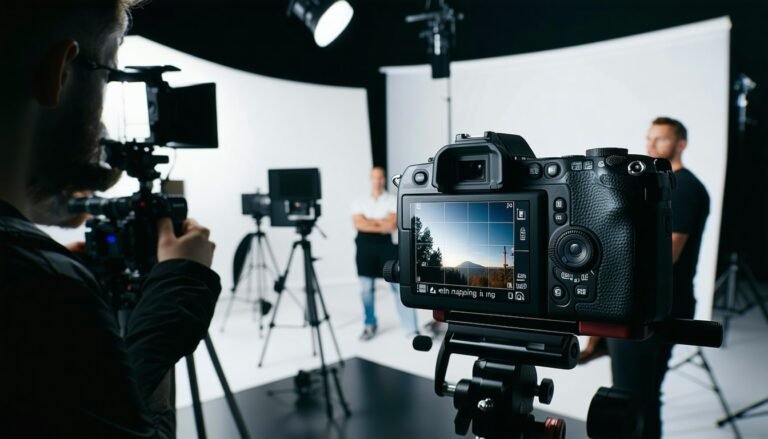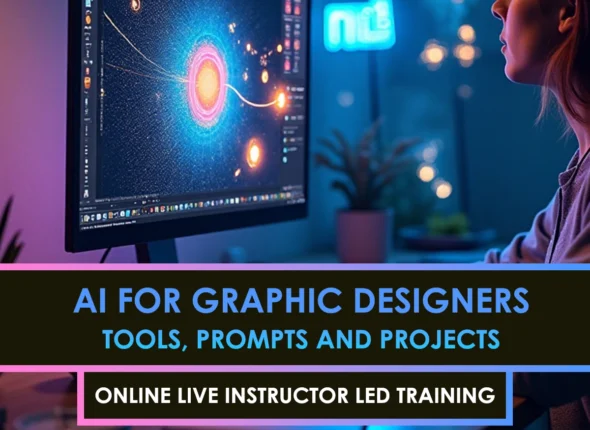Embrace depth mapping in filmmaking.
Depth mapping in filmmaking is your secret ingredient for creating immersive 3D scenes that truly stand out on the screen. Perhaps you’ve tried layering footage before and ended up with characters that look like cardboard cutouts. Yeah, I’ve been there too. When you lean into well-crafted depth mapping, you give your audience a sense of reality that makes them lean in and go, “Wow, this feels real.” In this ultimate guide, you’ll explore how to craft convincing depth in your shots, enhance stereoscopic visuals, and avoid those dreaded flat-looking worlds.
What depth mapping does
Depth mapping is essentially making a blueprint of your scene’s distance data. It tells your software which objects are close, which are farther away, and how each element should interact when viewed from different angles. If you’re working on VFX for 3d movies, this data is gold. Correctly mapping depth means you can composite layers so they appear to occupy the same space, rather than floating around awkwardly.
Why depth matters
- It engages viewers by adding realism and immersion
- It lets you separate foreground, midground, and background for better compositing
- It paves the way for advanced stereoscopic filmmaking, enabling that wow-factor your viewers crave
The real benefit? Once you learn depth mapping, you unlock a lot of other 3d depth creation techniques. Think of it as the building block of all your 3D illusions.
Master essential techniques
Getting the hang of depth mapping is not just about pressing a button; it’s about understanding the underlying principles that govern it. You need to know how your shots, lighting, and software work together. That’s where a little preparation and know-how can save you hours of frustration.
Compare manual and automatic approaches.
- Manual rotoscoping:
- Ideal for precise edges and complex scenes
- Time-consuming, but you’ll appreciate the control once you see perfect edges around hair or detailed objects
- Automated tools:
- Faster, often using machine learning or built-in stereo matching features
- Great starting point, but results can be messy if your scene is too intricate or poorly lit
In practice, you might combine both methods. Use software automation for broad strokes, then refine areas needing razor-sharp precision.
Explore tools and workflows.
Different pipelines handle depth mapping differently, but they share some common steps:
- Import footage into your compositing or 3D software.
- Use depth-generation tools to assign distance values to every pixel or object.
- Tweak thresholds to manage edge transitions, reduce noise, or remove anomalies such as stray strands of hair or overly dark corners.
- Composite your layers, adjusting for object distances and parallax shifts.
If you’re aiming for serious, advanced stereoscopic filmmaking, be prepared to experiment with multiple passes, color grading, and fine-tuning your final map before locking it in.
Apply stereoscopic strategies
Once you’ve mastered mapping, you’ll want to merge that data with stereoscopic effects to create a seamless 3D experience. In other words, you’re not just building a nice depth map; you’re also making sure each eye sees a slightly different perspective. That’s what convinces viewers they’re looking through a window, not just at a screen.
Align camera distances
In a real-world stereoscopic shoot, your cameras need to be placed at the proper interaxial distance (the separation between the two lenses). Translate that to post-production: you’ll simulate the same principle with virtual cameras. If your depth mapping is off, your stereoscopic effect looks flat or uncomfortably hyper-real. Dial in a moderate camera distance first, then adjust the separation if you need a more dramatic 3D effect.
Fine-tune parallax
Parallax is all about the shift in objects relative to each other as your viewing angle changes. When you apply your depth maps, observe how foreground elements shift about the background. If something feels unnatural—like a giant building gliding too quickly—take a step back. Realistic parallax can make all the difference between smooth, immersive 3D and a jarring viewing experience.
Expand your 3D horizons.
Whether you’re a budding 3D stereoscopic artist or a seasoned filmmaker, depth is one of those fundamentals that you’ll continually refine. Pairing depth mapping with additional stereoscopic effects in movies helps make your final product feel cohesive and polished.
- Reflective surfaces can enhance dimensionality by showing multiple angles at once
- Ramped lighting helps emphasize layers and focal points in your scene
- Particle systems, like floating dust or sparks, bring extra depth when correctly mapped
Feeling inspired yet? Your final composition becomes a living, breathing image that resonates with your audience.
Conclusion and call to action
Depth mapping unlocks a new level of realism in every project. By combining manual precision, automated tools, and an understanding of stereoscopic principles, you’re poised to craft visuals that capture your viewers’ attention—and never let go.
Now that you’re armed with these insights, it’s time to roll up your sleeves and experiment. Jump into your favorite software, carefully map out your shot, and watch as your scenes transform from flat 2D frames to immersive worlds. If you crave even more tips and tricks, feel free to explore advanced strategies in 3d depth creation techniques. Then give us a big shout out when your next project has audiences asking, “Wait, how’d you do that?” Have fun, and keep creating!
FAQS – Frequently Asked Questions
What Is Depth Mapping In Filmmaking?
Depth mapping in filmmaking is a technique used to represent the distance of objects from the camera by assigning grayscale values to each pixel in a scene.
Why Is Depth Mapping In Filmmaking Important?
Depth mapping in filmmaking is crucial for creating realistic 3D visuals, visual effects, and spatial awareness within a cinematic environment.
How Does Depth Mapping In Filmmaking Work?
Depth mapping in filmmaking works by capturing data that assigns depth values to every pixel, which can then be used for compositing, VFX, or stereoscopic rendering.
What Tools Are Used For Depth Mapping In Filmmaking?
Common tools for depth mapping in filmmaking include depth sensors, LIDAR scanners, stereo cameras, and 3D modeling software like Blender, Maya, and Nuke.
Is Depth Mapping In Filmmaking Used In Green Screen Effects?
Yes, depth mapping in filmmaking can improve green screen keying by isolating subjects from the background based on spatial distance, not just color.
Can Depth Mapping In Filmmaking Be Done In Post-Production?
Yes, depth mapping in filmmaking can be generated in post-production using motion tracking and depth estimation algorithms from 2D footage.
How Is Depth Mapping In Filmmaking Used In VFX?
Depth mapping in filmmaking enables seamless VFX integration by providing spatial context for lighting, shadows, and object placement in a scene.
What Is The Relationship Between Depth Mapping In Filmmaking And 3D Rendering?
Depth mapping in filmmaking enhances 3D rendering by supplying accurate z-depth data, which improves realism in focus, perspective, and occlusion.
Does Depth Mapping In Filmmaking Help With Camera Tracking?
Yes, depth mapping in filmmaking helps camera tracking by adding an additional layer of spatial data, making object tracking more precise in complex shots.
Can AI Enhance Depth Mapping In Filmmaking?
AI tools can greatly improve depth mapping in filmmaking by predicting and generating depth maps from single-camera footage using machine learning models.
Is Depth Mapping In Filmmaking Used In Animation?
Absolutely. Depth mapping in filmmaking is used in animation to simulate depth of field, layering, and parallax effects for a more immersive experience.
What Is A Z-Depth Pass In Depth Mapping In Filmmaking?
A z-depth pass in depth mapping in filmmaking is a grayscale image that represents distance from the camera, used in compositing and VFX pipelines.
Can Smartphones Be Used For Depth Mapping In Filmmaking?
Modern smartphones with dual or LiDAR sensors can capture depth data, making depth mapping in filmmaking more accessible for indie creators and short films.
Is Depth Mapping In Filmmaking Needed For Stereoscopic 3D?
Yes, depth mapping in filmmaking is fundamental for stereoscopic 3D, helping to separate left-eye and right-eye views for proper depth perception.
What Are The Limitations Of Depth Mapping In Filmmaking?
Limitations of depth mapping in filmmaking include sensor inaccuracies, occlusion issues, and difficulty capturing fine details in complex scenes.
What Are Real-Time Applications Of Depth Mapping In Filmmaking?
Depth mapping in filmmaking is used in real-time for virtual production, live compositing, and augmented reality environments on set.
How Does Depth Mapping In Filmmaking Improve Compositing?
Depth mapping in filmmaking allows for accurate layer separation, better lighting interactions, and realistic integration of CGI into live footage.
Is Depth Mapping In Filmmaking Used In Virtual Production?
Yes, depth mapping in filmmaking plays a vital role in virtual production by enabling spatial awareness and camera tracking within LED wall environments.
Can Depth Mapping In Filmmaking Be Used With Drones?
Drones equipped with depth sensors can generate aerial depth mapping in filmmaking, useful for terrain analysis, scene planning, and VFX setup.
How Does Depth Mapping In Filmmaking Affect Depth Of Field?
Depth mapping in filmmaking allows for simulated or controlled depth of field effects in post, giving directors more flexibility in focus control.
Where Can I Learn Depth Mapping In Filmmaking?
You can learn depth mapping in filmmaking through VFX training programs, filmmaking courses, and online platforms like Udemy, Coursera, or FXPHD.













